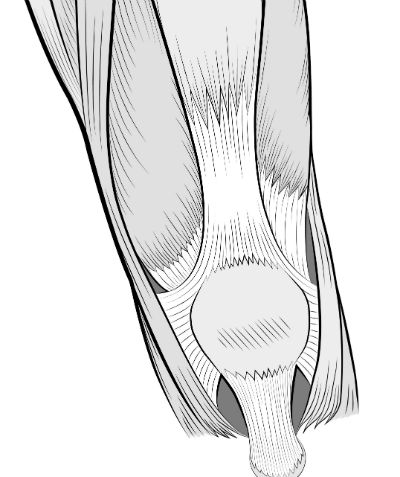Maintaining knee flexibility after injury or surgery is a complex interplay of many anatomical structures.
 First published in 2017, and reviewed August 2023 by Dr Sheila Strover (Clinical Editor)
First published in 2017, and reviewed August 2023 by Dr Sheila Strover (Clinical Editor)
Summing up the course on Anatomy of Knee Flexibility
You should by now have a much improved understanding of how the soft tissues and tissue spaces around the knee facilitate normal knee movement.
We have follow-on courses to explain how to manage the situation if the knee is becoming stiff during rehabilitation, or if the knee is already in had trouble with arthrofibrosis.
Transcript of the video
It should now be clear to you that two key components dominate the picture when it comes to talking about knee flexibility.The one is the joint capsule with its capacious potential cavity and loose accommodating folds.
The other is the whole structure that is in charge of extension - what we call the 'extensor mechanism', which is the bulky quads muscles of the thigh, reaching from the hip, through the patella, to the tibia, and intimately engaging with the capsule too via the fibrous expansions of the retinaculum on either side of the patella.
 So when the extensor mechanism is called into play to straighten the leg, the separate heads of the quads contract and are able to do so efficiently because of the fascia layer between them. The force is distributed through the patella and the retinacular expansions and the unfettered connection of the patellar tendon to the tibia allows the tibia to be pulled and the joint straightens.
So when the extensor mechanism is called into play to straighten the leg, the separate heads of the quads contract and are able to do so efficiently because of the fascia layer between them. The force is distributed through the patella and the retinacular expansions and the unfettered connection of the patellar tendon to the tibia allows the tibia to be pulled and the joint straightens.
At the same time, the folds at the back of the capsule and the sides of the joint, and the slippery bursal pockets around the patella, allow the bony articulation to move freely, and the hamstrings muscles and tendons at the back of the knee can play out to their full length.
The unfettered cruciate ligaments inside the joint, between femur and tibia, allow full extension, yet maintain stability.
Then when the hamstrings contract and the joint moves into flexion, the quadriceps lengthen and the fascial layers between the muscle heads play out some slack, to allow the movement. The patella engages in the groove of the femur and its tendon is able to gently lift up from the tibia at the anterior interval.
The bursae and the folds in the joint capsule accommodate to all these shifting structures.
It is a concert of motion, but one that is only too easily thrown into disharmony when the knee is injured, swollen, painful and inflamed!
PREVIOUS PART: Rehabilitation problems with regaining extension
END OF COURSE.
